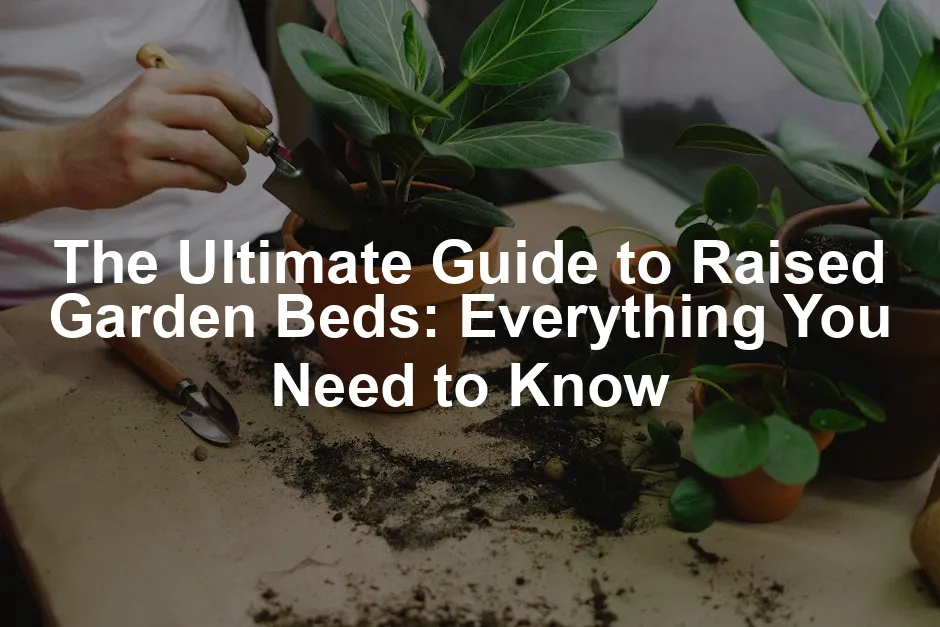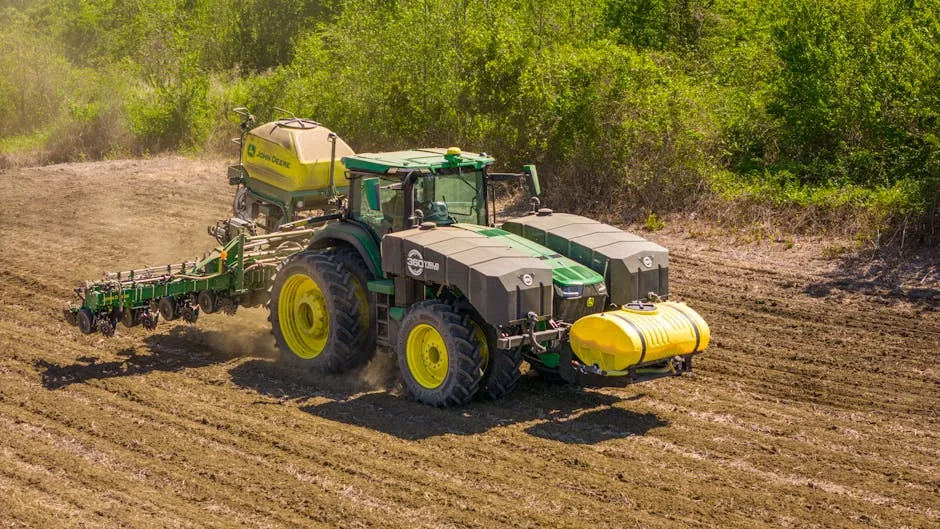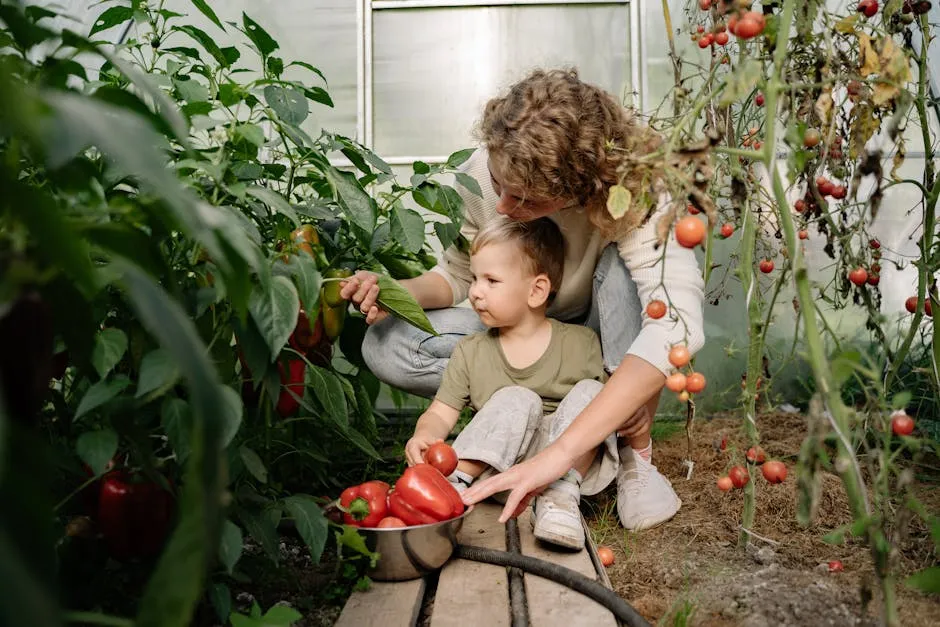

The Ultimate Guide to Raised Garden Beds: Everything You Need to Know
Introduction
Are you considering starting a raised garden bed? You’re not alone! Many gardeners are embracing this method. Raised garden beds are popular for a good reason. They offer numerous benefits that enhance your gardening experience. Improved soil quality is a major plus. These beds help you avoid compacted soil issues, allowing roots to thrive. Additionally, maintenance becomes easier, making gardening more enjoyable. This guide will serve as a comprehensive resource for both beginners and experienced gardeners.
If you’re diving into the world of gardening, it’s essential to equip yourself with the right knowledge. A great resource is The Vegetable Gardener’s Bible by Edward C. Smith. This book offers a wealth of information on growing vegetables, ensuring your raised beds yield a bountiful harvest.
Summary and Overview
Raised garden beds are precisely what they sound like: garden beds elevated above ground level. They offer distinct advantages, such as tailored soil conditions and better drainage. You can choose between DIY options or pre-made kits, depending on your preference. This article caters to novice gardeners and seasoned pros alike, including eco-conscious individuals eager to optimize their gardening setups. You will learn about construction, soil preparation, planting techniques, and ongoing maintenance tips to ensure a thriving garden.
To enhance your gardening knowledge, consider exploring companion planting strategies for increased yield.
Benefits of Raised Garden Beds
Soil Quality: Raised beds significantly improve soil health. You can create a custom soil mix that caters to your plants’ specific needs. Good drainage is another huge benefit, preventing waterlogging that can harm roots.
Accessibility: One of the most significant advantages is enhanced accessibility. Raised beds are easier to reach, especially for those with mobility issues. Say goodbye to bending over for long periods!
Pest Control: Raised beds can deter certain pests. Elevating your plants makes it harder for critters like rabbits to access them. You can also cover raised beds with netting to keep pests at bay.
Aesthetic Appeal: Let’s face it—raised beds look great! They create defined lines in your garden and can enhance your landscape design. Choose materials that complement your home’s style for an attractive addition to your yard.
Extended Growing Season: Raised beds warm up faster in spring. This means you can plant earlier and enjoy fresh produce sooner. The soil stays warmer, which can lead to a more extended harvest season.
With all these benefits, why not give raised garden beds a try? They can transform your gardening experience into something truly rewarding. To get started, you might want to consider a great beginner’s guide to help you along the way!

Choosing the Right Location
Choosing the right spot for your raised garden bed is crucial. Start with sunlight. Most vegetables need at least six hours of direct sunlight daily. More sun means healthier plants and better yields. So, pick a sunny area in your yard.
Next, consider drainage. Look for a well-draining spot. Poor drainage can lead to waterlogged soil, which harms roots. If your yard has heavy clay or puddles after rain, rethink your location.
Water access is another factor. Ensure you can easily water your plants. A nearby hose or watering can make your gardening routine more manageable.
Finally, think about environmental factors. Avoid areas that flood or face strong winds. Protecting your plants from harsh conditions helps them thrive. With careful location selection, your raised garden bed can flourish beautifully. Speaking of water access, a garden hose with a spray nozzle can make watering a breeze!

Materials for Building Raised Garden Beds
When it comes to building raised garden beds, your material choices matter. Wood is a popular option. Untreated wood, like cedar and redwood, is ideal. These woods resist decay naturally and won’t leach harmful chemicals. However, treated wood can be an option if you use modern types that do not contain arsenic. Always check the label to be safe.
If you’re looking for alternatives, consider metal or concrete blocks. Metal beds, like galvanized steel, are durable and can last for years. Concrete blocks provide a rustic look while offering strength. Composite materials are also gaining popularity. These options often combine recycled materials for an eco-friendly approach.
Cost is a key factor too. Untreated wood is generally more affordable upfront but may require replacement sooner than metal or composite options. Think about longevity versus initial costs when choosing your materials.
Sustainability is another important aspect. Opting for local, sustainably sourced materials reduces your environmental footprint. Choosing eco-friendly options not only benefits your garden but also the planet. If you’re looking for a convenient way to start, a raised garden bed kit might be just what you need!

Step-by-Step Guide to Building a Raised Garden Bed
Planning and Designing Your Bed
Before you start, think about the size and height of your raised garden bed. A common recommendation is to make it four feet wide, ensuring easy access from both sides. Length can vary, but aim for eight to ten feet for effective planting. For height, consider twelve to eighteen inches. Taller beds reduce bending and can help with weed control. If you plan to grow deep-rooted plants, opt for the taller options.
Tools and Materials Needed
Gathering the right tools and materials is crucial for success. Here’s a quick list to get you started:
Tools:
- Drill and drill bits
- Circular saw or handsaw
- Level
- Tape measure
- Hammer
- Screwdriver
- Landscape fabric (optional)
Materials:
- Untreated wood (cedar or redwood is best)
- Galvanized screws
- Corner brackets for support
- Optional: landscape fabric to prevent weeds
Construction Steps
Site Preparation: Begin by clearing the area where you’ll build. Remove any grass, weeds, or debris. Ensure the ground is level; a flat surface is essential for stability.
Building Process:
- Cut your wood to the desired lengths.
- Assemble the frame by securing the corners using screws.
- If you’re using corner brackets, attach those for added stability.
- Stack additional boards if you want a taller bed, ensuring everything remains level as you go.
- For extra support, you can drive stakes into the corners that go into the ground.
Finishing Touches: Once the bed is built, consider adding a lip around the top edge. This not only looks nice but also adds extra stability. If you want, add landscape fabric to the bottom to help with drainage and prevent weeds from growing up through the soil.

Soil Preparation for Raised Beds
Choosing the right soil mix is vital for healthy plants. A good blend consists of equal parts topsoil and compost. This combination ensures proper drainage and provides the necessary nutrients. If you’re unsure about your soil quality, a soil test kit can help you monitor pH and moisture levels effectively.
Layering Techniques: Start by placing a layer of coarse materials like small stones or gravel at the bottom for drainage. Next, add a layer of cardboard or newspaper. This helps suppress weeds while allowing water to flow through.
Finally, fill the bed with your soil mix, layering it as you go. This method enhances aeration and promotes healthy root development.
Nutrient Considerations: Before planting, consider testing your soil mix. This helps you understand nutrient levels and pH balance. If needed, amend your soil with organic fertilizers or compost to ensure your plants have everything they need to thrive. Proper soil preparation is key to a flourishing garden!

Planting Strategies for Raised Garden Beds
Crop Selection
Choosing the right crops is essential for your raised garden bed. Vegetables like tomatoes, peppers, and lettuce thrive in these conditions. Herbs such as basil, parsley, and cilantro also do well. These plants prefer well-drained soil and benefit from the nutrient-rich mix you can create. Consider your climate and growing season to select the best crops. What are you excited to grow this year? Don’t forget to check out an organic vegetable seeds variety pack for a great start!

Planting Techniques
Spacing is crucial when planting in raised beds. Follow the guidelines on seed packets, but feel free to plant closer together. You’ll have easier access for maintenance, which allows for denser spacing. Companion planting can also enhance growth. For example, plant basil near tomatoes to boost flavor and deter pests. Rotate your crops each season to maintain soil health and reduce disease risk. When do you plan to start planting?
Irrigation Options
Watering techniques make a significant difference in your garden’s success. Drip irrigation is an efficient method that delivers water directly to the roots, conserving moisture. You can also use soaker hoses, which provide a similar benefit. For smaller beds, a watering can or hose might suffice. Ensure consistent moisture without overwatering. If you want to make watering even easier, consider a drip irrigation kit!

Maintenance Tips for Raised Garden Beds
Weeding and Pest Control
Keeping your raised beds healthy starts with regular maintenance. Hand-pulling weeds is often enough, as raised beds tend to have fewer weeds than in-ground gardens. Consider using mulch to suppress weed growth and retain moisture. For pests, introduce beneficial insects like ladybugs or use organic pest control methods. Are you ready to tackle those pesky weeds?

For more on managing pests in your garden, check out organic pest control methods for tomato plants.
Soil Management
Maintaining soil health is vital for thriving plants. Top off your beds with compost each season to replenish nutrients. This practice keeps your soil rich and supportive. Monitor nutrient levels using soil tests, adjusting with organic fertilizers as needed. Healthy soil leads to healthy plants. What soil amendments do you plan to use? You might also want to consider a 4-tiered tumbling composter for easy composting!

Seasonal Care
Preparing your raised garden beds for winter ensures they remain productive. Clear out dead plants and add a layer of mulch to protect the soil. In spring, refresh your soil by mixing in fresh compost. This practice revitalizes your beds and prepares them for new growth. Are you excited for the upcoming gardening season? Don’t forget to grab some organic bark mulch to keep your soil protected!

Conclusion
Raised garden beds offer so many benefits. They provide better soil conditions, easier access, and enhanced pest control. Plus, they add charm to your yard! Starting your own raised bed garden can be a rewarding experience. So, why wait? Gather your materials, choose your crops, and enjoy the joy of gardening!
Suggestions for Further Reading or Resources for Continued Learning
If you’re eager to learn more about raised garden beds and enhance your gardening skills, plenty of resources can help. Here are some fantastic suggestions that cater to different aspects of gardening:
- Books:
- The Vegetable Gardener’s Bible by Edward C. Smith offers a comprehensive guide to growing vegetables, including information on raised beds.
- Square Foot Gardening by Mel Bartholomew focuses on maximizing space in raised beds, ideal for those with limited areas.
- Websites:
- Gardener’s Supply Company: Their website has numerous articles and resources about different gardening techniques, including raised bed gardening.
- Fine Gardening: This site provides expert advice on various gardening topics, including materials and design ideas for raised beds.
- Podcasts:
- Check out Joe Gardener Show, which covers a range of gardening topics, including raised bed gardening tips and tricks.
- The Gardening Podcast offers insights from experienced gardeners, discussing their favorite methods and what works best for raised beds.
- YouTube Channels:
- Garden Answer features engaging videos on gardening basics, including how to set up and maintain raised beds.
- Epic Gardening provides practical tips and tricks for growing vegetables effectively in raised beds.
- Online Courses:
- Websites like Udemy and Skillshare offer online gardening courses that include sections on raised beds, soil preparation, and pest management.
- Community Resources:
- Join local gardening clubs or online forums where you can share experiences, ask questions, and get advice from fellow gardeners. Websites like Reddit have active gardening communities.
- Social Media:
- Follow gardening hashtags on platforms like Instagram and Pinterest for inspiration, tips, and visual guidance on raised garden beds.
These resources will help you grow your knowledge and confidence in gardening. Happy planting! And don’t forget to check out a garden tools set to make your gardening tasks easier!
Would you like to share your own experiences or ask questions? We’d love to hear from you in the comments below! And don’t forget to subscribe for more gardening tips and tricks delivered right to your inbox.
Please let us know what you think about our content by leaving a comment down below!
Thank you for reading till here 🙂
All images from Pexels



